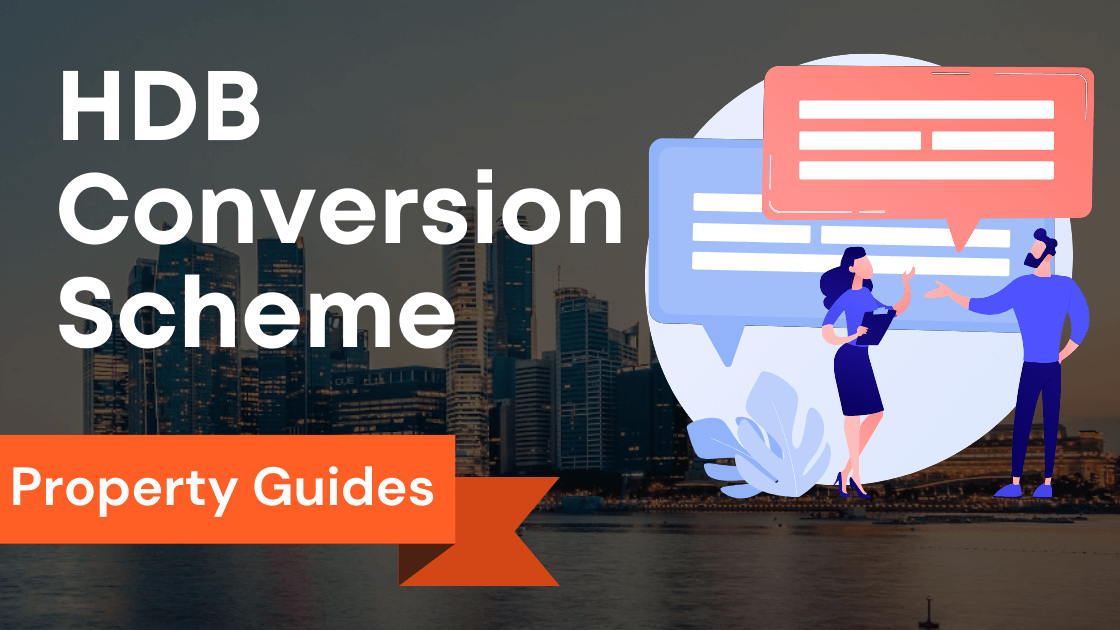Introduction to Neighbourhood Renewal Programme (NRP)

The Neighbourhood Renewal Programme (NRP) is a government initiative aimed at enhancing the living environment in HDB estates.
This programme focuses on making improvements to the precincts, community spaces, and facilities in order to create vibrant and cohesive neighborhoods for the residents.
Overview of the Neighbourhood Renewal Programme and its importance
The Neighbourhood Renewal Programme (NRP) is designed to address the changing needs and aspirations of residents in HDB estates.
By rejuvenating the living environment, the NRP aims to create a better quality of life for residents.
Under the NRP, various precinct improvements are made to enhance the aesthetics, functionality, and accessibility of the estates.
This includes upgrading community spaces such as parks, playgrounds, and open spaces, creating more recreational options for residents.
The programme also encourages community bonding by organizing block parties and other social activities in communal spaces.
By revitalizing the estates, the NRP creates a positive impact on the overall well-being of the residents.
It improves the overall living environment, making it more comfortable and enjoyable for both young and old.
The NRP is an important initiative as it improves the social fabric of the community and fosters a sense of pride and ownership among the residents.
Key Features of Neighbourhood Renewal Programme (NRP)
The Neighbourhood Renewal Programme (NRP) incorporates several key features that contribute to its success:
- Comprehensive survey: The government conducts a detailed survey to gather feedback from residents on their needs and priorities for improvement. This ensures that the NRP aligns with the aspirations of the community.
- Town hall meetings: To promote transparency and active citizen participation, town hall meetings are held to explain the NRP plans and gather suggestions from residents.
- Fully funded by the government: The NRP is fully funded by the government, ensuring that the improvements are implemented without any financial burden on the residents.
- Enhanced amenities: The programme focuses on improving amenities such as upgrading void decks and common areas to provide residents with more comfortable and functional spaces.
- Enhancing the quality of the living environment: The NRP aims to improve the overall quality of the living environment in HDB estates. This includes enhancing green spaces, upgrading infrastructure, and enhancing connectivity between different areas with high-low linkways.
The Neighbourhood Renewal Programme (NRP) plays a vital role in revitalizing HDB estates and creating vibrant and cohesive neighborhoods.
By investing in the renewal and improvement of the living environment, the NRP contributes to the overall well-being and satisfaction of the residents, fostering a strong sense of community and belonging.
Key Takeaways
- Objectives and Benefits:
- Improve living conditions and infrastructure in HDB estates.
- Enhance overall quality of life for residents through upgrades.
- Focus on aesthetics, functionality, and accessibility improvements.
- Community Spaces and Amenities:
- Upgrade parks, playgrounds, and open spaces.
- Foster community bonding through block parties and social activities.
- Enhance amenities like void decks for a comfortable living experience.
- Key Features of NRP:
- Comprehensive survey to align with community aspirations.
- Town hall meetings for transparency and citizen participation.
- Fully funded by the government for financial burden-free implementation.
- Focus on enhanced amenities and quality of living.
- Scope of NRP:
- Encompasses upgrading facilities, enhancing precincts, and community development.
- Focus areas include facility upgrades, connectivity enhancements, and community building.
- Process and Implementation:
- Structured process with key steps, including block selection and public consultation.
- Collaboration with residents through town hall meetings and dialogue sessions.
- Implementation includes planning, construction, and post-evaluation.
- Collaboration with Residents:
- Active consultation with residents through various engagement initiatives.
- Collaboration with town councils to represent residents’ interests.
- Interim Upgrading Programme to address immediate needs during renewal.
- Impact on Housing and HDB Flats:
- NRP extends beyond individual flats to revitalize entire estates.
- Successful case studies showcase transformation and enhancement of living environments.
- Positive outcomes include improved accessibility, enhanced green spaces, and community revitalization.
- Challenges and Considerations:
- Determining scope considering age, condition, and resident preferences.
- Ensuring sustainability and cost-effectiveness in renewal efforts.
- Prioritizing community engagement and addressing potential displacement.
- Successful NRP Case Studies:
- Tampines Town, Queenstown Estate, and Punggol Town showcase transformative successes.
- Positive outcomes include improved amenities, vibrant community spaces, and successful heritage integration.
- Addressing Concerns and Future Planning:
- Minimizing inconvenience during construction and ensuring affordability.
- Ongoing refinement based on feedback and lessons learned.
- Commitment to fulfilling objectives while adapting to residents’ needs for sustainable urban development.
Objectives and Benefits of the Neighbourhood Renewal Programme

Improving living conditions and infrastructure in HDB estates
The Neighbourhood Renewal Programme (NRP) is a government initiative aimed at enhancing the living environment in HDB estates.
The primary objective is to improve the living conditions and infrastructure for residents, ensuring that they have a comfortable and pleasant living experience.
Under the NRP, various upgrades and improvements are made at the estate and precinct levels.
This includes enhancing the aesthetics, functionality, and accessibility of the facilities and amenities.
For example, block-level upgrades are carried out to improve the lift systems, create barrier-free access, and enhance the overall environment.
Connectivity is also a key aspect of the NRP.
High-low linkways are built to provide seamless connectivity between different areas within the estate, making it more convenient for residents to move around.
These improvements not only create a more friendly environment but also contribute to the overall well-being of the residents.
To ensure that residents have a say in the improvements, the NRP includes initiatives like online voting forms.
This allows residents to voice their opinions and prioritize the upgrades they want to see in their community.
By involving the community in decision-making processes, the government can better address the needs and aspirations of the residents.
Enhancing community spaces and amenities for residents
Another important objective of the NRP is to enhance community spaces and amenities for the residents.
The programme focuses on creating vibrant and cohesive neighborhoods by improving facilities and recreational options.
Community spaces such as parks, playgrounds, and open spaces are upgraded to provide residents with more opportunities for social interaction and leisure activities.
This includes installing new equipment, improving greenery, and creating spaces for block-level activities.
Amenities within the HDB estates are also enhanced under the NRP.
Town councils work closely with residents to identify areas for improvement, such as upgrading lift lobby tiling and creating elderly fitness corners.
These initiatives aim to cater to the diverse needs of the residents and promote a healthy and active lifestyle.
The NRP plays a significant role in enhancing the overall quality of life for residents in HDB estates.
By investing in the renewal and improvement of the living environment, the programme fosters a strong sense of community and belonging.
It creates spaces where residents can come together, interact, and build meaningful relationships, ultimately making HDB estates a desirable place to live.
Scope of NRP
The Neighbourhood Renewal Programme (NRP) is a government initiative aimed at enhancing the living environment in HDB estates.
The programme has a wide scope and coverage, impacting various aspects of housing and community development.
It focuses on improving the living conditions and infrastructure, as well as enhancing communal spaces and amenities for residents.
Overall Scope and Coverage of NRP
The NRP encompasses a range of initiatives that contribute to the overall improvement of HDB estates.
These initiatives include upgrading facilities, enhancing precinct levels, and making improvements at the block and precinct levels.
Under the NRP, the government aims to improve the overall quality of housing by upgrading facilities such as drop-off porches and ramps, ensuring accessibility for all residents.
Additionally, the Lift Enhancement Programme is carried out to improve lift systems in HDB blocks, making them more efficient and reliable.
The programme also focuses on improving communal spaces and amenities within the estates.
This includes upgrading parks, playgrounds, and open spaces to provide residents with more opportunities for social interaction and leisure activities.
Town councils work closely with residents to identify areas for improvement, such as creating elderly fitness corners and enhancing greenery.
https://www.youtube.com/watch?v=Bju7fXMNkTU
Key Focus Areas of NRP
The NRP has several key focus areas that are essential for the improvement of HDB estates.
These include upgrading facilities, enhancing connectivity, and promoting a sense of community.
Facility upgrades aim to improve the functionality and aesthetics of living spaces.
This involves upgrading infrastructure such as lift systems, walkways, and common areas.
These upgrades not only improve the overall living experience for residents but also ensure their safety and convenience.
Enhancing connectivity is another important focus area of the NRP.
High-low linkways are constructed to provide seamless connectivity between different areas within the estate.
This makes it more convenient for residents to move around and access various amenities.
Promoting a sense of community is also a priority under the NRP.
The programme aims to create vibrant and cohesive neighborhoods by enhancing communal spaces and amenities.
This encourages social interaction among residents and fosters a strong sense of belonging and community spirit.
The Neighbourhood Renewal Programme (NRP) has a broad scope and coverage, addressing various aspects of housing and community development.
Through facility upgrades, connectivity enhancements, and the promotion of a sense of community, the NRP aims to improve the overall living environment in HDB estates and create desirable places for residents to call home.
Process and Implementation of the Neighbourhood Renewal Programme

Key steps and timeline for NRP projects
The Neighbourhood Renewal Programme (NRP) follows a structured process to ensure effective implementation and timely completion of projects. Here are the key steps and timeline for NRP projects:
- Block and Neighbourhood Selection: The Housing Development Board (HDB) identifies blocks and neighborhoods that require renewal based on various factors such as age, condition, and feedback from residents.
- Decision-Making and Collaboration: The town council, in collaboration with residents, forms a Renewal Committee to oversee the renewal process. This committee consists of representatives from the town council, grassroots organizations, and residents’ committees. They work together to prioritize renewal projects and make informed decisions.
- Public Consultation: Active consultation with residents is a crucial step in the NRP process. Town hall meetings, dialogue sessions, and consultations are held to gather suggestions and feedback from residents. This ensures that their needs and concerns are considered in the renewal plans.
- Planning and Design: Based on feedback from residents and the Renewal Committee, a detailed plan and design proposal are developed. This includes specific improvements such as upgrading facilities, enhancing green spaces, and improving connectivity within the neighborhood.
- Implementation and Construction: Once the plans are finalized, the implementation phase begins. Construction work is carried out by contractors appointed by the town council in collaboration with relevant authorities. The timeline for construction varies depending on the scale of the project.
- Completion and Evaluation: After construction is completed, the renewed blocks and neighborhoods are evaluated to ensure that the objectives of the NRP have been met. Feedback from residents is also gathered to assess the impact and effectiveness of the renewal efforts.
Collaboration with residents and stakeholders in the renewal process
The Neighbourhood Renewal Programme (NRP) places a strong emphasis on collaboration with residents and stakeholders throughout the renewal process.
Here’s how collaboration is fostered:
- Active Consultation: The NRP actively involves residents in the decision-making process. Through town hall meetings, dialogue sessions, and consultations, residents are given a platform to voice their suggestions, concerns, and ideas. Their opinions are considered in shaping the renewal plans to ensure that the improvements meet their needs.
- Collaboration with Town Council: The town council plays a key role in facilitating resident engagement and collaboration. They work closely with residents to gather feedback and ensure that their interests are represented during the renewal process. The town council also takes into account residents’ suggestions and feedback when making decisions about the scope of the renewal projects.
- Interim Upgrading Programme: During the renewal process, the town council may implement an Interim Upgrading Programme to address immediate repair needs. This provides interim improvements to blocks and precincts, benefiting eligible residents and improving their living conditions while awaiting the full-scale renewal.
- Dialogue Sessions with Stakeholders: Besides residents, the NRP also engages other stakeholders such as grassroots organizations and residents’ committees. Dialogue sessions are conducted to gather their input and ensure that the renewal plans align with the overall objectives of the community.
- Precinct Improvements and Repair Activities: The collaboration between residents and the town council extends to ongoing precinct improvements and repair activities. These activities aim to enhance the quality of living spaces and address maintenance issues promptly, ensuring that residents’ concerns are addressed in a timely manner.
By actively involving residents and collaborating with relevant stakeholders, the NRP aims to create a renewal process that reflects the needs and aspirations of the community.
This ensures that the improved neighborhoods are not only aesthetically pleasing but also functional and conducive for residents to live in.
Overview of Housing and HDB Flat
Housing is a crucial aspect of people’s lives, providing them with a place to call home.
In Singapore, the Housing and Development Board (HDB) plays a pivotal role in ensuring affordable and quality housing for its residents.
HDB flats, which are publicly subsidized housing units, are a common choice for many Singaporeans.
Impact on Housing and HDB Flats
The Neighbourhood Renewal Programme (NRP) has had a significant impact on housing and HDB flats.
The scope of the NRP extends beyond individual flats, encompassing the revitalization of entire HDB estates and precincts.
Through successful case studies in different HDB estates, the NRP has demonstrated its ability to transform and enhance living environments.
The NRP focuses on the final stage of the rejuvenation process, where HDB blocks within precincts are given a new lease of life.
Block parties, community events, and the construction of facilities and neighborhood centers are organized to create a vibrant and cohesive community.
These initiatives provide opportunities for residents to come together and build strong social bonds.
One notable success of the NRP is the revitalization of the iconic Dragon Playground—a beloved childhood symbol—in several precincts.
Additionally, the programme addresses structural issues like the repair of spalling concrete, ensuring that HDB flats are not only aesthetically pleasing but also safe and structurally sound.
Examining the Positive Outcomes and Improvements Made
Implemented in 1990, the NRP has brought about positive outcomes and improvements that have transformed HDB estates.
The drop-off porches and barrier-free access in flats built under the NRP have greatly improved accessibility for residents, including the elderly and persons with disabilities.
These enhancements contribute to a more inclusive and livable environment.
The NRP projects have also focused on improving the overall living environment and facilities within the precincts.
By enhancing green spaces, creating community spaces, and constructing amenities such as neighborhood centers, the NRP has provided residents with a first-class living environment.
These improvements have not only beautified the estates but also improved the quality of life for the residents.
Potential Obstacles in Implementing the NRP
While the NRP has proven successful, there are potential obstacles that need to be addressed for effective implementation.
One challenge is to focus on minimizing inconvenience to residents during the construction phase.
The Parliament has set a requirement to minimize the temporary relocation of residents to at least 50%.
The process continues to be refined based on feedback and lessons learned from previous projects.
Another obstacle is the concern of affordability for residents.
The NRP, along with precinct improvements, requires residents to contribute a portion of the costs.
To address this concern, town councils have implemented various measures such as staggered payment plans and options for financial assistance.
Additionally, the NRP ensures that improvements are not limited to a single precinct but spread across neighboring precincts, minimizing any disparity.
https://www.youtube.com/watch?v=h5Rz0nHOs-w
Addressing Concerns regarding Affordability and Displacement
To address concerns related to affordability and potential displacement, the NRP working committee engages with residents at both the initial and second stages of the programme.
The affordability concerns are addressed by carefully assessing costs and providing financial assistance where needed.
As for displacement, the NRP takes into account residents’ well-being and encourages the sprucing up of adjacent precincts instead of major upgrading programmes that may lead to the loss of common area facilities.
The NRP remains committed to fulfilling its objectives while addressing the concerns of residents.
By working hand in hand with residents and adapting to their needs, the NRP continues to rejuvenate HDB estates and provide residents with a more vibrant, inclusive, and sustainable living environment.
Successful NRP Case Studies

Neighbourhood Renewal Programme (NRP) has been instrumental in transforming various housing estates and enhancing the quality of living for residents.
Let’s take a look at some successful NRP case studies:
- Tampines Town: Tampines, one of the largest residential towns in Singapore, went through a comprehensive NRP that revitalized the neighborhood. The project encompassed upgrading HDB flats, improving amenities, and enhancing green spaces. The revitalized Tampines Town now boasts modern playgrounds, vibrant community spaces, and enhanced connectivity, contributing to a better quality of life for its residents.
- Queenstown Estate: Queenstown Estate, a well-established housing estate with rich historical significance, underwent an NRP to rejuvenate the area. The project involved the refurbishment of aging infrastructure, upgrading of housing blocks, and the creation of new recreational areas. Today, Queenstown Estate stands as a testament to successful neighbourhood renewal, combining its heritage with modern amenities.
- Punggol Town: Punggol, once a quiet fishing village, underwent a major transformation through the NRP. The project focused on creating a sustainable and vibrant waterfront town, with improved transportation networks, recreational amenities, and public spaces. Punggol Town is now a thriving residential area with beautiful waterfront promenades, parks, and modern housing options.
These case studies demonstrate the positive impact of the NRP on transforming neighbourhoods and improving the living environment for residents.
The scope of the NRP goes beyond physical improvements, as it also aims to foster community bonding, promote social integration, and enhance the overall well-being of residents.
By studying these successful case studies, other housing estates can draw inspiration and learn from the strategies employed to achieve successful neighbourhood renewal.
The NRP serves as a valuable model for future urban planning and development projects, emphasizing the importance of creating sustainable, vibrant, and inclusive communities.
In the next section, we will discuss the challenges and considerations that come with implementing the Neighbourhood Renewal Programme.
Challenges and Considerations in the Neighbourhood Renewal Programme

The Neighbourhood Renewal Programme (NRP) is a comprehensive initiative undertaken by the Housing Development Board (HDB) in Singapore to improve and rejuvenate public housing estates.
While the programme aims to enhance the living environment and quality of life for residents, it is not without its challenges and considerations.
One of the primary challenges faced in the NRP is determining the scope of the renewal programme.
With countless HDB flats spread across different towns and estates, prioritizing areas for renewal becomes a crucial factor.
Factors such as the age and condition of existing infrastructure, the needs and preferences of residents, and the potential for future development are taken into account when making these decisions.
Another consideration in the NRP is ensuring that the renewal efforts are sustainable and cost-effective.
As the programme involves extensive renovation of existing housing estates, careful planning is required to minimize disruptions to residents’ daily lives.
Additionally, given the limited resources available, it is essential to strike a balance between the cost of renewal and the desired outcomes.
Furthermore, community engagement is a crucial aspect of the NRP.
In order to implement successful renewal programmes, the HDB needs to actively involve and gather feedback from residents.
This process ensures that the initiatives are tailored to the specific needs of each estate and fosters a sense of ownership among residents.
Additionally, the NRP needs to address the issue of displacement.
As renewal projects may require residents to temporarily relocate, it is essential to provide appropriate support and assistance during this transition period.
This includes ensuring that affected residents have access to suitable alternative accommodation and that they are adequately compensated for any inconvenience caused.
The Neighbourhood Renewal Programme is not without its challenges and considerations.
However, with careful planning, community engagement, and a focus on sustainability, the programme has the potential to significantly improve the living conditions and quality of life for residents in public housing estates.
Conclusion: Looking Forward with NRP
With the Neighborhood Renewal Programme (NRP) in place, Singapore’s neighborhoods have experienced significant improvements and transformations.
The program, also known as the Home Improvement Programme (HIP), has focused on enhancing the living conditions and overall quality of life for residents.
As we move forward, the NRP aims to continue its development, ensuring that the neighborhoods remain vibrant, safe, and comfortable places to call home.
The Future of NRP and its Continuous Development in Improving Neighborhoods
The NRP has made a remarkable impact on the neighborhoods since its inception in 1981.
Through the program, block by block, residents have witnessed their surroundings being revitalized and rejuvenated.
Looking ahead, the NRP plans to expand its scope and encompass more contiguous precincts, ensuring that the benefits reach a wider range of residents.
In the future, the NRP will continue to prioritize the needs and preferences of residents.
This includes considering their feedback and suggestions through platforms like the Residents’ Corner, where homeowners can voice their concerns and ideas for improvement.
By actively involving the residents in decision-making processes, the NRP can ensure that the initiatives undertaken truly align with their needs.
Additionally, the NRP will put an emphasis on minimizing inconvenience during the renovation process.
The program will make use of technologies and effective project management strategies to ensure smooth execution and to minimize disruptions to residents’ daily lives.
By doing so, the NRP aims to create a positive experience for everyone involved, from the residents themselves to contractors carrying out the works.
Benefits and Improvements Experienced by Residents through NRP Initiatives
Since its establishment, the NRP has brought about numerous benefits and improvements for residents.
One of the key advancements is the installation of new lift lobbies in older blocks.
This has greatly improved accessibility and convenience for residents, especially the elderly and those with mobility challenges.
Furthermore, the NRP has focused on upgrading common areas within the neighborhood, such as parks and community spaces.
These enhancements have created more appealing environments for residents to engage in various recreational activities and build stronger community bonds.
In addition to physical improvements, the NRP has also initiated social programs to foster a sense of unity and belonging within the neighborhood.
These programs include mini-exhibitions, neighborhood showcases, and events that encourage residents to come together and celebrate their vibrant community.
Overall, the NRP has had a positive impact on the neighborhoods by enhancing the overall aesthetics, functionality, and livability.
The program has successfully upgraded blocks and carried out necessary repair works to ensure that the infrastructure is well-maintained and in great condition.
Residents can look forward to a more vibrant and inclusive community as the NRP continues to roll out proposed projects.
These projects may include repainting works, installing new facilities, and implementing modern technologies for increased sustainability and energy efficiency.
In conclusion, the NRP has played a significant role in rejuvenating Singapore’s neighborhoods and improving the lives of its residents.
With a commitment to continuous development and a focus on resident feedback, the program ensures that the neighborhoods remain attractive, comfortable, and sustainable places to live.
As we look to the future, the NRP will continue to make Singapore’s neighborhoods thrive while maintaining the unique character and heritage of each area.
Frequently Asked Questions
What is the Neighbourhood Renewal Programme (NRP)?
The Neighbourhood Renewal Programme (NRP) is a programme aimed at revitalising and enhancing selected public housing precincts in Singapore. It focuses on block-level improvements, such as the repainting of blocks, upgrading of neighbourhood parks, and the construction of covered walkways. The NRP aims to improve the physical landscape, public amenities, connectivity, and accessibility in these areas.
What is the objective of the Neighbourhood Renewal Programme?
The objective of the Neighbourhood Renewal Programme is to revitalise and enhance selected public housing precincts in Singapore. It aims to improve the physical environment, public amenities, and connectivity of these areas to create a more pleasant and sustainable living environment for residents.
How does the Neighbourhood Renewal Programme work?
The Neighbourhood Renewal Programme works in several stages. Initially, a consensus gathering exercise is conducted to gather feedback and suggestions from residents regarding the improvement works they would like to see in their neighbourhood. Based on this feedback, the town council’s Neighbourhood Renewal Committee plans and implements the necessary improvements, such as repainting of blocks, upgrading of public amenities, and construction of covered linkways.
What are the benefits of the Neighbourhood Renewal Programme?
The Neighbourhood Renewal Programme brings several benefits to residents. It enhances the physical landscape and public amenities of the neighbourhood, making it a more pleasant and comfortable place to live in. The programme also improves connectivity and accessibility within the neighbourhood, with the construction of covered walkways and linkways. This creates a safer and more convenient environment for residents.
How are the types of public amenities chosen for the Neighbourhood Renewal Programme?
The types of public amenities chosen for the Neighbourhood Renewal Programme are based on the feedback and preferences of the residents. During the consensus gathering exercise, residents are given the opportunity to voice their opinions and suggest the types of amenities they would like to see in their neighbourhood. The town council’s Neighbourhood Renewal Committee takes these suggestions into consideration when planning and implementing the programme.
What is the difference between the Neighbourhood Renewal Programme (NRP) and the Home Improvement Programme (HIP)?
The Neighbourhood Renewal Programme (NRP) focuses on revitalising and enhancing selected public housing precincts, whereas the Home Improvement Programme (HIP) focuses on individual housing blocks. The NRP aims to improve the overall environment and amenities within a larger area, while the HIP targets specific blocks for upgrading and essential repair works.
Are there any specific neighbourhoods that have undergone the Neighbourhood Renewal Programme?
Yes, there are several neighbourhoods that have undergone the Neighbourhood Renewal Programme. Examples include the Jurong Central Neighbourhood Renewal Programme and the Master Plan Neighbourhood Renewal Programme. These programmes have revitalised and enhanced the physical environment, public amenities, and connectivity in these neighbourhoods.
How can residents participate in the Neighbourhood Renewal Programme?
Residents can participate in the Neighbourhood Renewal Programme by providing feedback and suggestions during the consensus gathering exercise. They can also stay updated on the progress of the programme through various channels, such as NRP brochures and survey forms. Additionally, residents can get involved in community activities and initiatives organized by the town council to contribute to the improvement of their neighbourhood.
How often does the Neighbourhood Renewal Programme take place?
The frequency of the Neighbourhood Renewal Programme varies depending on the specific neighbourhood and its needs. The programme is typically carried out in middle-aged HDB estates that require revitalization and enhancement. The decision to proceed with the programme is based on the assessment of the town council and the needs of the residents.
When did the Neighbourhood Renewal Programme start?
The Neighbourhood Renewal Programme was first introduced in 1989. Since then, it has been ongoing and has brought significant improvements to selected public housing precincts in Singapore. The programme has evolved over the years, expanding its scope to include various block-level improvements and upgrading of public amenities.












